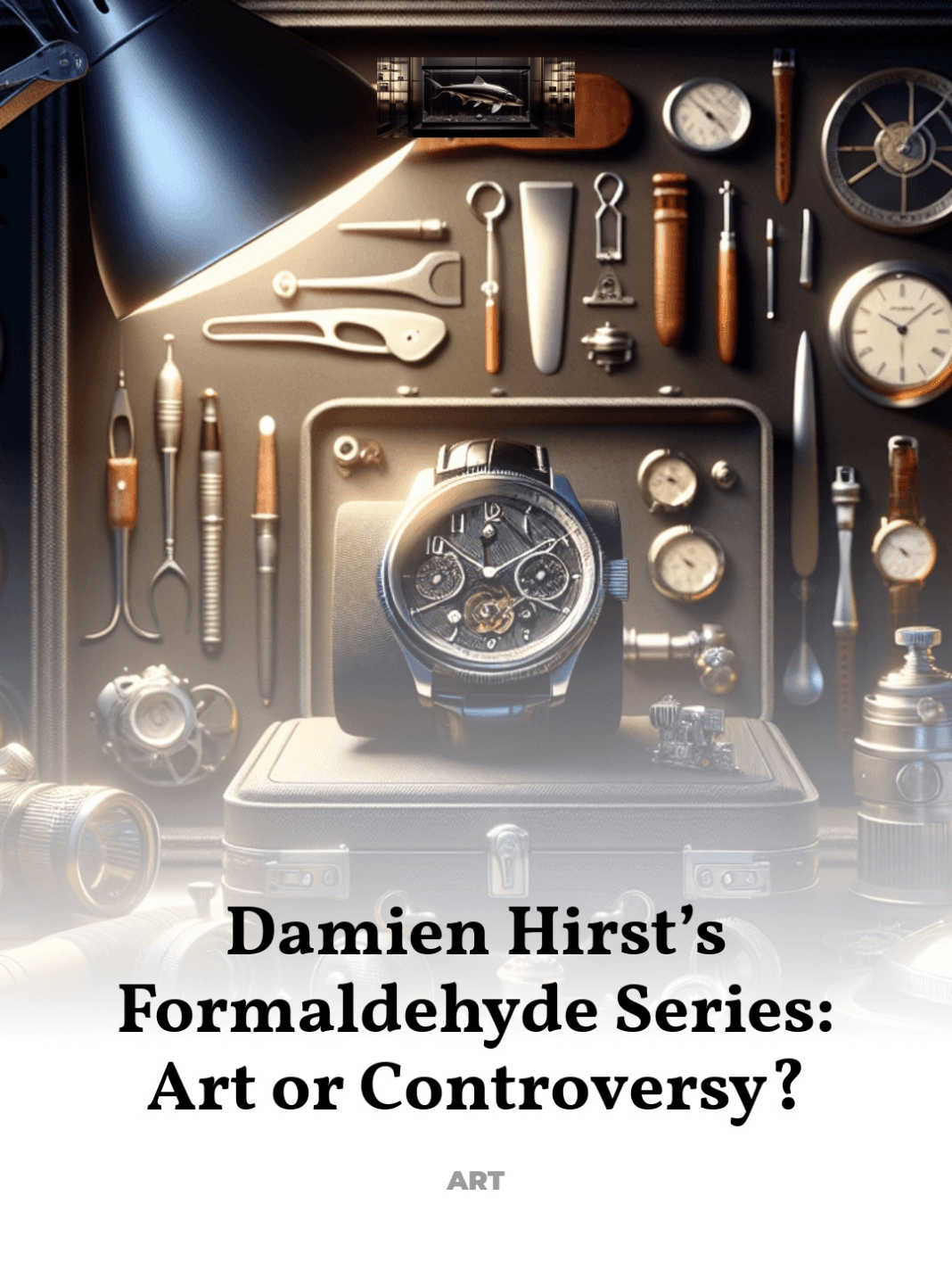How preserving animals in tanks of chemicals became high-value conceptual art
At the intersection of modern art and ethical debate stands Damien Hirst’s formaldehyde series. These works, featuring animals preserved in tanks of chemicals, challenge the boundaries of traditional art and provoke a dialogue on the nature of life, death, and preservation.
- Conceptual Origins: The Birth of the Formaldehyde Series
- Artistic Value and Techniques
- Cultural Impact and Public Reception
- The Ethical Debate Surrounding Animal Preservation
- Hirst’s Legacy and Influence in Contemporary Art
Conceptual Origins: The Birth of the Formaldehyde Series
Damien Hirst, a leading figure in the Young British Artists movement of the 1990s, first captured widespread attention with his series that utilized formaldehyde as a preservative medium. This choice was both innovative and controversial, positioning Hirst at the forefront of contemporary art.
The inception of Hirst’s formaldehyde artworks began with “The Physical Impossibility of Death in the Mind of Someone Living,” featuring a tiger shark suspended in a tank filled with formaldehyde. This piece not only sparked discussions on the nature of art but also set a precedent for using preservation techniques in modern installations.
- Conceptual Framework: Hirst’s work explores themes of life, death, and decay, questioning the viewer’s understanding and acceptance of mortality.
- Technical Aspects: The use of formaldehyde serves both a functional and metaphorical purpose, preserving the biological form while highlighting the impermanence of life.
Artistic Value and Techniques
The formaldehyde series by Damien Hirst is not merely about shock value or scientific display; it is a deep exploration of the aesthetics of death juxtaposed with the beauty of life. Each piece is meticulously crafted, with careful consideration of the specimen’s placement and the visual clarity of the formaldehyde solution.
Hirst’s technique involves a complex preservation process that ensures the longevity and visual integrity of the biological subjects. This process, while scientific in nature, is executed with an artist’s touch, emphasizing form, color, and composition to evoke emotion and thought.
- Material Selection: The choice of animals, from sharks to sheep, is deliberate, chosen for their symbolic meanings and visual impact.
- Preservation Expertise: Hirst collaborates with professional biologists and chemists to achieve a balance between aesthetic quality and biological preservation.
Cultural Impact and Public Reception
Since its debut, Hirst’s formaldehyde series has ignited debates and garnered reactions ranging from awe to outrage. These works have been displayed in major museums and galleries worldwide, attracting millions of viewers and generating significant media coverage.
The public’s reception is polarized; some praise Hirst for his boldness and innovation, while others criticize the ethical implications of using real animals in art. Regardless of the stance, Hirst’s work undeniably leaves a lasting impression and stimulates ongoing discourse in the art community and beyond.
- Media Attention: The series has been featured in numerous publications, highlighting its controversial nature and its challenge to conventional aesthetics.
- Public Engagement: Exhibitions of the series often include educational programs and discussions, fostering a deeper understanding and appreciation of contemporary art practices.
The Ethical Debate Surrounding Animal Preservation
The use of animals in art, particularly when involving preservation chemicals like formaldehyde, raises significant ethical questions. Hirst defends his work by discussing the broader themes of life and death, suggesting that the animals used in his art are treated with respect and serve a higher artistic purpose.
However, animal rights organizations and ethical critics argue that the use of deceased animals for artistic expression commodifies life and may desensitize the public to issues of animal welfare. This ongoing debate highlights the complex interplay between art, ethics, and societal values.
- Ethical Considerations: Each piece is accompanied by documentation detailing the source and treatment of the animals, ensuring transparency and ethical accountability.
- Artistic Justification: Hirst often discusses the role of art in pushing societal boundaries and provoking thought, framing his work within a larger philosophical context.
Hirst’s Legacy and Influence in Contemporary Art
Damien Hirst’s formaldehyde series has left an indelible mark on contemporary art, influencing a generation of artists and altering public perceptions of what art can be. His work challenges viewers to reconsider the boundaries between art, science, and ethics, continuing to inspire and provoke.
The series not only reflects Hirst’s audacious approach to art but also encapsulates a period of intense experimentation and dialogue in the art world. As controversial as they are celebrated, these works ensure Hirst’s place in the annals of modern art history.
- Influence on Artists: Many contemporary artists cite Hirst as an influence, adopting his bold methodologies and thematic explorations in their own works.
- Cultural Significance: The formaldehyde series has become a touchstone for discussions on the role of contemporary art in society, reflecting broader cultural and ethical trends.
For further reading, explore authoritative sources such as Tate Modern’s Damien Hirst Archives.



